Page Structure and Design
Each page of a web presence consists of specific basic elements. Additionally, there are various specialized page types. Here you will learn how best to use these.
Each page of a web presence consists of specific basic elements. Additionally, there are various specialized page types. Here you will learn how best to use these.
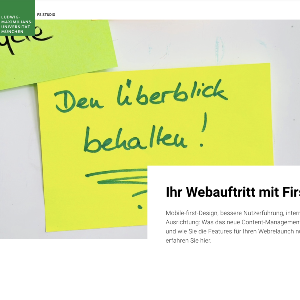
© LMU Referat VI.5 Internetdienste
Detailed instructions in the WCMS Wiki on Bayerncollab/Confluence (access-restricted).
A page consists of various basic elements.
The stage contains central elements such as the logo and the name of the institution. These elements are defined at the beginning. It includes important navigation components such as the hamburger menu, breadcrumb navigation and quick links / deep links. On desktop screens, a language switch option is also visible.
On detail and overview pages, the stage includes a precise heading and a text that summarizes and/or introduces the page content.
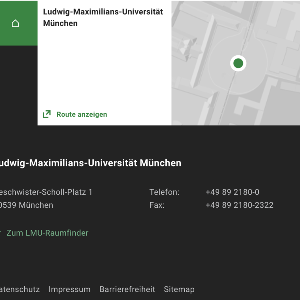
© LMU Referat VI.5 Internetdienste
The footer contains contact information for your institution, social media channels, and can, if necessary, be adapted by your project administration or central support. In addition, legally relevant information on privacy, accessibility, and imprint (legal notice) is included.
Navigation helps your users find their way around your website, stay well-oriented, and quickly access the topics relevant to them. A good navigation structure improves accessibility as well as findability and ranking in search engines.
Challenge:
Recommendations:
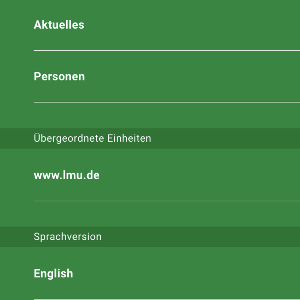
© LMU Referat VI.5
The hamburger navigation is the main navigation, present consistently across all pages of your web presence.
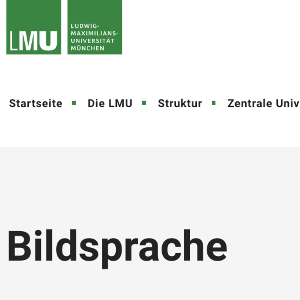
© LMU Referat VI.5 Internetdienste
On the top left you find the so-called “breadcrumb” navigation, which shows where in the subsection of the site you currently are and allows you to jump up one or more levels.
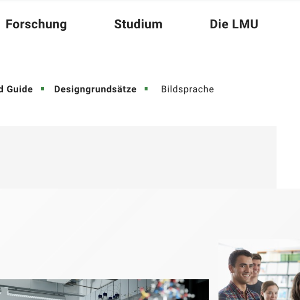
Directly next to the hamburger navigation are three horizontal navigation items that serve as quick access points to the most important subpages of your site. Like the hamburger menu, these quicklinks are displayed on all pages. They are usually determined during the go live phase but can also be adjusted later by the project administration or central support.
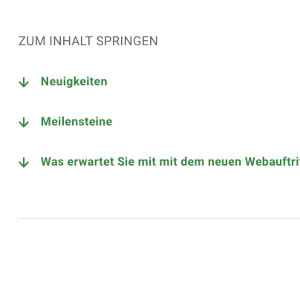
© LMU Referat VI.5 Internetdienste
Anchor links can be enabled for a page. They are generated automatically and create a table of contents of the main headings on a page. They allow users to jump quickly to individual topics.
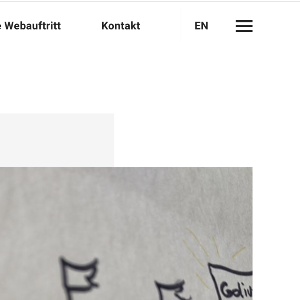
© Referat VI.5 Internetdienste
If your website is multilingual , users have two options for switching between languages:
At LMU, FirstSpirit offers different page types with specialized properties and corresponding modules for layout. For each page type, there are specialized paragraph modules that allow you to design your website and content appropriately. Some paragraph modules (due to their features) can be used only on specific page types, while others are available across all page types.
They make up approximately 10% of a web presence. An overview page is a search-engine-optimized entry page designed to announce a broad topic area and guide visitors to various subtopics using multiple teaser modules. Rather than providing information, it aims to spark interest in a given subject and serves a promotional purpose. For this reason, overview pages are highly image-focused and rely on emotional impact.
Text Display
Overview pages are not intended for detailed explanations or complex content. For introductory and brief explanatory text, overview pages offer a two-column text module.
Approximately 90 % of all pages on a web presence typically consist of detail pages. The detail page (also known as the “content page”) is the standard page type. Its purpose is the clear and structured presentation of information, facts, and complex content for the various target groups of LMU. As the name suggests, detail pages go into detail. They are less image-heavy than overview pages. To structure complex and text-heavy content clearly and make it easily accessible to LMU’s target audiences, detail pages primarily provide text modules.
Contact person pages as well as news and event pages can become so‑called “data sources.” These are created once by editors in the system and can then be integrated and displayed at many locations.
You do not need to create separate pages for persons, news, or events yourself - you only enter the data in the data source editor. FirstSpirit then automatically generates the specific page when it is accessed.
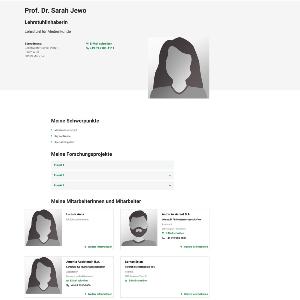
On person profile pages, all details about an individual are listed. In addition to standard contact information, a variety of modules familiar from other page types can be integrated—such as for displaying the CV, assistance team, or publications in an illustrative manner.
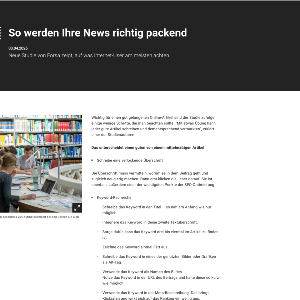
© Referat VI.5 Internetdienste
On news pages, developments are presented in detail. In addition to the standard fields, you can also use additional modules for elaborate presentation of the news, such as embedding an image slider or video.
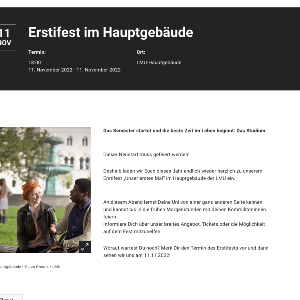
© Referat VI.5 Internetdienste
Event pages display events in detail. In addition to the standard fields, you can also integrate other modules such as an Anny booking form.